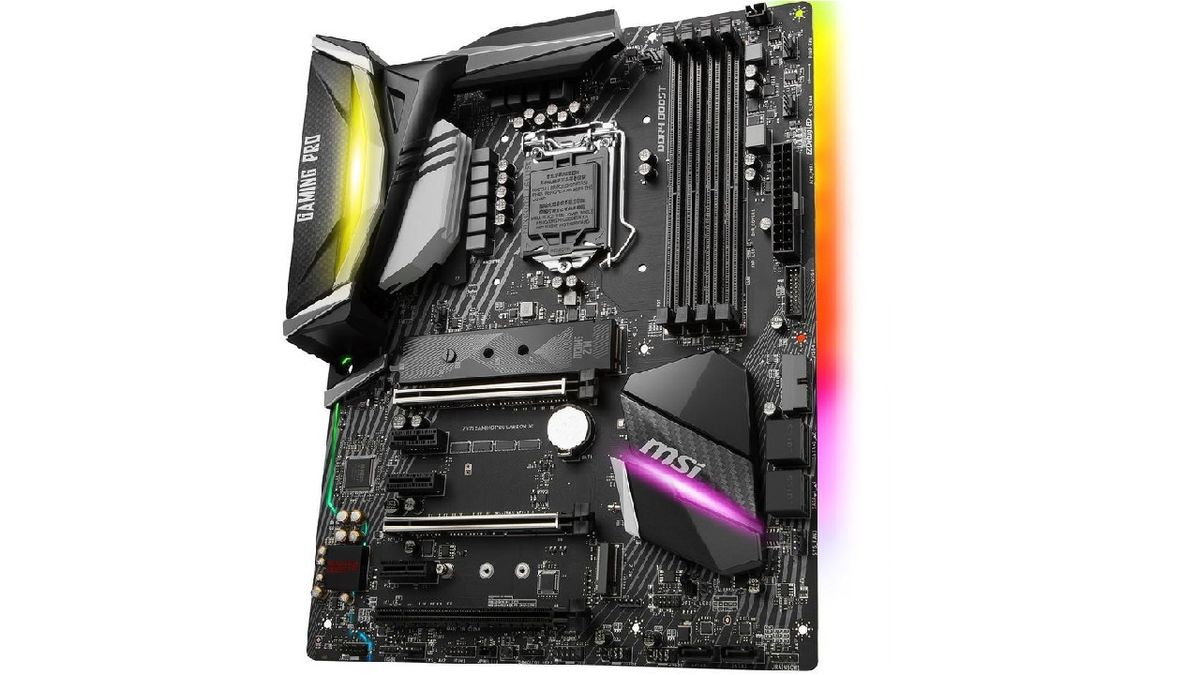How to build your own PC for gaming
Get the most bang from your buck and build your own perfect PC for gaming in 2019

It's January 2019, and you're likely looking for a new challenge in your life. One thing you could do is build your own PC for gaming, like you've always wanted to do, but were always a little afraid of. That's understandable - it can be hugely intimidating to build a PC from scratch, and the internet is filled with technical jargon and a wealth of opinions on how to do it best. That can make it daunting, and you may find it's just best to buy one of the best gaming PCs pre-built, which is fine if a little more expensive and impersonal than doing it yourself. However, if you build your own PC for gaming not only can you save money, you can also tightly control the specs of your machine AND upgrade it in the future when you have more money or feel more confident about the components you need.
So where to start? How do you pick parts and ensure they’re compatible?
Why you can trust 12DOVE
The first step is to establish a budget for yourself, and figure out where a PC fits into your life; what you’ll use it most for, how much you afford to allocate for it, how much time and effort you want to devote to doing research and shopping around. Ideally, you should assign as much as possible to future-proof your PC, so right now you can probably build a decent rig for about $1000 / £1000. It's possible to get a good budget PC together for about $650 / £550, and at the extreme end... you could spend $3000+ / £2700+.
Of course, the last thing you want is to grab a bunch of parts and discover that none of them fit together properly, or during that first baited-breath boot sequence find yourself confronted by nothing but a black screen. Luckily, there are a huge number of sites available now aimed specifically at avoiding those problems, and several with a unique take on the parts picker formula tailored to specific needs.
- The best high end gaming PC build for 2019
- The best budget gaming PC build for 2019
The best parts picker and build assistance sites
PCPartPicker - The granddaddy of parts pickers, it will let you select each piece individually or recommend a build based on your needs/desires. Do you want a gaming rig or a versatile desktop? Any strong preferences for Intel, AMD, or Nvidia? They also feature a number of suggested builds that you can then modify to your heart’s content, and compare retailers for each part.
ChooseMyPC - ChooseMyPC presents you with some simple questions upfront (how much do you want to spend? Do you need a copy of Windows) and then recommends a build based on your specifications. It also hosts some great, in-depth guides to picking the right parts and putting everything together, with solid breakdowns of some popular models and which pieces you should prioritize in your build.
Logical Increments - As the name suggests, Logical Increments lists a huge range of different built suggestions that start at just over $200 and span all the way up to ~$5,000 monsters. If you follow a row all the way across, everything’s guaranteed to work in harmony, and there are also some handy suggestions and guides if you want to stray outside the lines.
Another option is to start with a barebones kit and build up from there. These usually include a case, motherboard, CPU, and power supply, and let you fill in the blanks with whatever hardware you like. They’re a great jumping off point and generally about as affordable as buying each piece individually and assembling them yourself. And don’t shy away from refurbished parts, as long as they’re under warranty and sold by the manufacturer or a reliable retailer. These ‘white box’ deals can often be the best way to get high end parts at the lowest possible prices.
- Game on the move with the best gaming laptops.
- Discover the best gaming mouse.
- Stare into the best gaming monitor.
A sample mid-range gaming build
If you’re looking for a quick suggested build, the following is a solid mid-range PC that you can pick up for around $1,000 / £1000 that prioritizes gaming performance over standard workload. This isn't the most powerful, nor the cheapest, but it should give you an idea of what you need and what the standard parts look like / cost. Check out our separate guides to help you figure out where you can spend or save money based on what you actually need.
Obviously, if you're buying for gaming, the most important parts are the GPU (graphics card), the RAM, and the CPU. We'd also recommend saving some cash for the best monitor you can afford too, because power is nothing unless you can display it properly.
CPU: Intel Core i5-6500 3.2GHz Quad-Core
For a more complete guide, check out our picks for best CPUs for gaming, but this Core i5 will provide enough computing horsepower for your gaming needs, while not exploding your budget for more processor than you'll ever use. Intel's 6th generation Skylake line sits right at the crossroads of cost vs. performance, and also have plenty of overhead for those inclined to go down the overclocking route.
Motherboard: Asus H110M-A M.2
The H110M-A actually provides better performance than a number of its competitors and, unlike some of the cheaper competition, offers an M.2 (NGFF) slot for faster solid state storage. It's a great choice in this price range despite some minor issues with the 3+1 power phases, which will only manifest as potential additional heat under incredibly high multitasking loads.
RAM: G.SKILL TridentZ RGB Series 16GB (2 x 8GB) 288-Pin DDR4
If you're curious about how RAM functions and want a full guide to picking out the best fit for your machine, check out our DDR RAM guide. G.Skill's Trident Z line is a visually flashy, high performance option, and the 2400 bandwidth is capacious enough to handle most use cases. If, on the other hand, you're looking to future proof your memory or end up with a little extra room in your budget, an upgrade to the 4266Mhz offering is also an excellent option.
Solid State Drive: PNY CS1311 240GB 2.5" Solid State Drive
The CS1311 boasts an incredible price for solid state storage and 240 gigs of space should be more than enough to stash all your most frequently played games, while the standard rotational drive is your home for other applications, older games, or backup data. While not the highest performing drive available, it is one of the best values.
Hard Drive: Western Digital 1TB 7200RPM
Unless you're storing a tremendous amount of data on your PC, a 1 TB drive should be more than adequate for your storage needs, and Western Digital makes one of the most durable and reliable 1 TB drives anywhere. Opting for a slightly lower storage drive shaves meaningful cost without sacrificing much by way of performance (especially considering that the most demanding software will live on the SSD).
Graphics Card: Nvidia GeForce GTX 1070 TI 8GB
For some other options, take a peek at our guide to the best graphics cards, but the 1070 Ti is a powerful option and the centerpiece of this gaming build. A powerful card that packs ample performance to run games at 4K and that will serve you well for some time to come. With the launch of the new 20 series cards, the 1070 is also likely to slip in price throughout 2019.
Case: Corsair Carbide Series 88R MicroATX Mid Tower
The 88R is a great mid tower that will show off the internal components, particularly that beautiful lit RGB RAM, to great effect, and features plenty of room for fans (upwards of 5 120mm blowers) to ensure everything's running fast and cool. It comes in a slick looking brushed gunmetal and has space to accommodate dual 240mm radiators if you decide to upgrade to a liquid cooling solution.
Power Supply: Rosewill Capstone 550W 80+ Gold Certified Semi-Modular ATX
The Capstone is a efficient, powerful PSU with plenty of wattage for expansion, and its semi-modular design means only necessary cables are attached by default, so you can save clutter and space inside your case and aren't constantly wrestling power supply cables when you're swapping components in and out or adding RAM.
Some online stores give us a small cut if you buy something through one of our links. Read our affiliate policy for more info.
Sign up to the 12DOVE Newsletter
Weekly digests, tales from the communities you love, and more
Alan Bradley was once a Hardware Writer for GamesRadar and PC Gamer, specialising in PC hardware. But, Alan is now a freelance journalist. He has bylines at Rolling Stone, Gamasutra, Variety, and more.

The Witcher 4 has "a huge team" focused on the believability of the RPG's world, because even things like trees and foliage always need to belong

Silent Hill's Pyramid Head creator is getting tired of some fan theories: "I occasionally need to deny the f*****g ridiculous headcanons"











